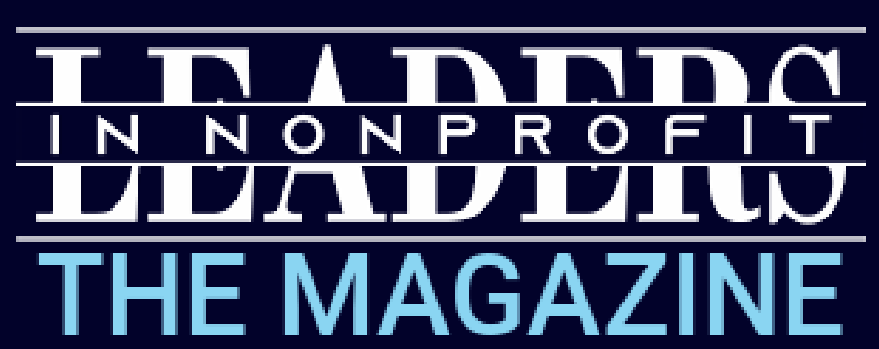What Nonprofits Can Do Now to Prepare for 2022?
When I initially wrote this post a little over a year ago, there were so many words to describe 2020: discomforting, exasperating, jarring, stressful, confusing, and the list goes on. 2021 was equally a rollercoaster ride of pandemic uncertainties.
The past two years challenged leaders in the nonprofit sector in the most unimaginable ways. In early April 2020, Charity Navigator conducted a survey to assess the adverse impact of COVID-19 in regard to financial and programmatic changes for nonprofit organizations. Charity Navigator surveyed 4,598 representatives at various nonprofits contacted 4,598, and as a result, 298 unique responses were collected from the survey.
Here are the key findings from the survey conducted by Charity Navigator:
83% of respondents reported they are suffering financially. Of those nonprofit organizations experiencing financial hardship, the average expected decline in revenue is 38% for the April – June time period.
64% of respondents reported having to cut back on their programs, while 23% of respondents are seeing an increase in demand for their programs.
32.9% of respondents reported a supply chain disruption and 48.8% reported having to completely cease a primary program due to the pandemic / economic shutdown.
27% of respondents have or are planning to lay off staff due to the pandemic, while 13% expect to hire additional staff to meet increased programmatic demand.
35.3% of respondents report a shortage of volunteers. While many organizations have been able to shift to working remotely, 10.5% of respondents report closing an office completely with the inability to work remotely.
With some uncertainty of what next year may bring (especially with the introduction of a new covid variant), here are some things you can do now to prep your nonprofit for the new year.
Celebrate your staff and volunteers
The past two years were hard for everyone and your staff and volunteers are tired and likely feel burnt out. Show your staff and volunteers that you appreciate them by celebrating them. While your budget may be tight due to the drastic changes that have happened throughout 2020 and 2021, find free or low-budget ways to celebrate your people. You can highlight them on social media by creating a dedicated post for each person, give them a hand-written card and their favorite treat, or you can treat them to a catered brunch or lunch. Either way, you’d be surprised at how the smallest gestures make a huge impact on your staff and employees.
Update your employee handbook and policies/procedures manual

In early 2020, with the implementation of the Families First Coronavirus Response Act and CARES Act, nonprofit organizations were required to follow certain key provisions of these laws that are relevant to nonprofits and their employees. While these laws were slated to end, nonprofit leaders should keep an eye out for any extensions or revisions that can be made to these laws and update internal policies and procedures as needed to reflect the new laws.
Did you allow your staff to work remotely during the shutdown? Did you have to lay off staff? Do you have policies in place for staff in case someone may contract COVID while at work? All of these are things to consider and then put down on paper and review with your board members, staff, and volunteers (if applicable). Employees want and need stability, clarity, and open communication to feel confident in their workplace and it’s in the best interest of your organization to understand how the aforementioned impacts your nonprofit and the people who work for you.
Ramp up technology and prep for digital demands
The prompt nationwide shutdown in March 2020 caused many industries to make swift adjustments and pivot to keep up with the digital demand. A great deal of nonprofit organizations with missions designed to interface in the flesh and operate solely with in-person programs and services had to modify and adapt to social distancing. For some organizations, this meant completely shutting down programming and for others, it meant reworking the method in which services were delivered.
With concerns around the new omicron variant, nonprofits must plan and tailor their programs and services for the potential of the future looking completely different and adjusting to a world where some (if not most people) prefer the convenience of technology and electronics.
Keep an eye on politics
With consistent changes at all levels of government, including a new President inaugurated in January 2020, nonprofits should always keep an eye on policies at the local, state, and federal levels. Public policy impacts nonprofit organizations in the areas of operations, finances (especially federal grants and budget/spending priorities), and business and contract relationships. Changes in administrations mean that new policies may be implemented and current policies can be changed.

Nonprofits start because there is an issue in their community. Nonprofit leaders should be willing to bring those issues to the forefront with their community leaders. Nonprofit leaders can attend town hall meetings, council meetings, school board meetings, legislative sessions, etc. Nonprofit leaders should also follow federal policy decisions to understand how these can impact state laws and ultimately impacts how the nonprofit operates.
Changes in administration at the state and local government levels mean that priorities may shift in your city or state that can directly impact your organization. The community issues that may have been a priority in the past few years can change with new leaders in office. An important goal for community organizations and nonprofits is that they should be willing to partake in nonpartisan politics.
According to Nonprofit Tech for Good, “55% of donors worldwide prefer to give online with a credit or debit card”. Furthermore, of the donors who donated via Facebook or Instagram’s Fundraising Tools, 89% said they are likely to give again through either platform. This data shows that it’s extremely important that you have an updated and easy-to-navigate website that makes it easy for potential donors to donate to your organization. Your organization should also utilize social media platforms to promote your organization and showcase the work that you are doing in the community.
Enhance your presence on the internet
“Millennials and Generation Z donors are active donors who donate often, in smaller amounts, but prefer more communication regarding their donations.”
Various consumer reports conducted by Forbes show that Millennials (like me!) and Generation Z donors are active donors who donate often, in smaller amounts, but prefer more communication regarding their donations via email. These generations also prefer more authentic content as opposed to advertising, meaning we value connection. We spend a lot of time on social media and if your nonprofit is active on these platforms, it helps build trust and we get to see where our money is going. We become loyal to brands that engage with us on social media. Millennials and Generation Z donors are also willing to fundraise for nonprofits they care about.
Build your funding strategy
It is always the perfect time to determine how you will raise money for your nonprofit organization. You can use this time of year to decide what your events for next year will look like, especially if in-person events may still not be feasible. You also can use this time to develop your grant prospecting strategy and create a grants calendar for all of the funding opportunities that are suitable for your organization.
Showcase what you’ve accomplished this year
While most of us wondered if 2021 was the apocalypse (part 2), the year wasn’t a total disaster, especially for the nonprofit sector. In 2020, according to Nonprofit Tech for Good, “60% of donors donated to a nonprofit organization due to the pandemic”.
Annual reporting is an ideal way to create a compilation of all the great work your nonprofit has accomplished this year. Annual reports don’t have to be an actual report. You can create a visually appealing graphic report showing pictures, narratives, and other quantitative and qualitative data from your organization and you don’t need a graphic designer to do this. Canva.com has pre-made annual report templates ready to use. Once created, you can share these via email, print, and share on your nonprofit’s social media pages. This will also provide your stakeholders and donors when a great summary of the work you are doing.
While this is not an exhaustive list of ways in which nonprofit leaders can prepare for 2022, I hope that these tips provided some guidance to you as a nonprofit leader. This year has been tough and while we are still in the midst of navigating a complex range of emotions and a whirlwind of changes, you can turn this year’s setbacks into next year’s successes.




